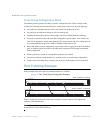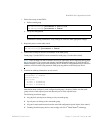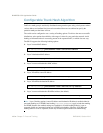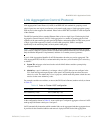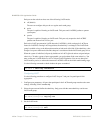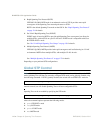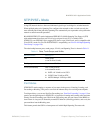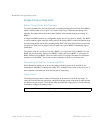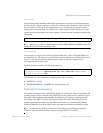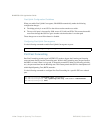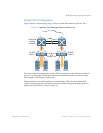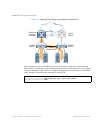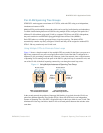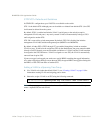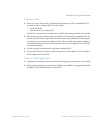
BLADEOS 6.5.2 Application Guide
112 Chapter 8: Spanning Tree Protocols BMD00220, October 2010
Bridge Protocol Data Units
Bridge Protocol Data Units Overview
To create a Spanning Tree, the switch generates a configuration Bridge Protocol Data Unit (BPDU),
which it then forwards out of its ports. All switches in the Layer 2 network participating in the
Spanning Tree gather information about other switches in the network through an exchange of
BPDUs.
A bridge sends BPDU packets at a configurable regular interval (2 seconds by default). The BPDU
is used to establish a path, much like a hello packet in IP routing. BPDUs contain information about
the transmitting bridge and its ports, including bridge MAC addresses, bridge priority, port priority,
and path cost. If the ports are tagged, each port sends out a special BPDU containing the tagged
information.
The generic action of a switch on receiving a BPDU is to compare the received BPDU to its own
BPDU that it will transmit. If the received BPDU is better than its own BPDU, it will replace its
BPDU with the received BPDU. Then, the switch adds its own bridge ID number and increments
the path cost of the BPDU. The switch uses this information to block any necessary ports.
Determining the Path for Forwarding BPDUs
When determining which port to use for forwarding and which port to block, the G8124 uses
information in the BPDU, including each bridge ID. A technique based on the “lowest root cost” is
then computed to determine the most efficient path for forwarding.
Bridge Priority
The bridge priority parameter controls which bridge on the network is the STG root bridge. To
make one switch become the root bridge, configure the bridge priority lower than all other switches
and bridges on your network. The lower the value, the higher the bridge priority. Use the following
command to configure the bridge priority:
RS G8124(config)# spanning-tree stp <x> bridge priority <0-65535>



